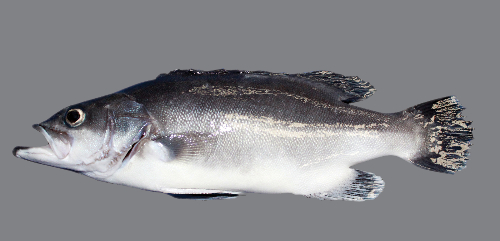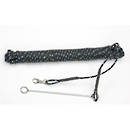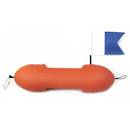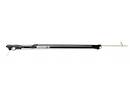Polyprion oxygeneios (Scientific Name)Other common names: hapuka, grouper or whapukuRULES AND REGULATIONSPlease check the latest rules and catch limits for hapuku in your area on the MPI website: https://www.mpi.govt.nz/fishing-aquaculture/recreational-fishing/fishing-rules/ |
 |
DESCRIPTION
Otherwise known as hapuka or grouper, these fish are truly a magnificent sight. Hapuku have a rather heavy, stocky body and are primarily a gun-barrel grey colour with a silvery-white underbelly. There are ten sharp dorsal spines running along its back, followed by softer ones further back and soft ones on their underside. They also have rounded anal and pectoral fins with a large square and very powerful tail. Hapuku are unmistakable once seen. The lower jaw protrudes from the top and when a school approaches the white underside of this jaw is usually the first thing seen by the diver. Hapuku have very large eyes adapted for hunting and inhabiting low light conditions.
AGE & GROWTH
Hapuku are a large, slow- growing, long lived species maturing at 10-13 years with a life span of up to 60 years. They can grow as large as 80kg but fish around the 20-30kg mark are more common..
HABITAT & FEEDING
Juveniles are thought to be pelagic associating with flotsam and floating vegetation in open water, switching to demersal at about 50cm total length. Hapuku inhabit temperate
and subtropical waters of the southern Indian and Pacific oceans around
Chile, South- eastern Australia and New Zealand.
Juveniles are thought to be pelagic, associating with flotsam and floating vegetation in open water and switching to demersal when they reach approximately 50cm in length. The adult hapuka are usually associated with some sort of structure or cracks, caverns or caves in shallow water. Hapuka can be found in waters ranging from 10 – 800 metres although generally at 50 metres plus. There are a few exceptions such as Fiordland and the Chathams where fish can be found in much shallower water. Hapuka are veracious predators feeding on red cod, blue cod, gurnards, hoki, crabs and crayfish to name a few.
FOOD QUALITY
Hapuku are a highly rated eating fish fetching top dollar on the local and international market. Possessing a firm white flesh, hapuku can be filleted or cut into steaks with the cheeks and throat being particularly good. They are excellent baked or fried (not usually eaten raw) but, like any fish, can be easily overcooked. Hapuku are by far, one of the best eating fish in our waters.
, tough and tasteless flesh - the best way to prepare it is by boiling, steaming or on the barbeque. For a few tips – read this issue’s recipe for cooking crayfish.
The Ocean Hunter float is designed to make things easier and tidier in the water
|







